As much as the scare stories want us to believe, the fact remains that Facebook ads are worth every penny or cent you spend. Around one-third of the global population is registered on Facebook. We’re talking about nearly 2.7 billion active Facebook users with a complete database of their goals, interests, and aspirations. It makes targeted Facebook Ad campaigns extremely effective.
Did you know that Facebook has over 60 million local business pages, and over 6 million businesses use Facebook Ads to reach their target audience! Most likely, your competition is already spending money on Facebook to get the attention of your ideal customers.
However, successful Facebook ad campaigns do not happen by magic. The stories like “I just put stuff on Facebook, ran some ads, and months later I was doing it full time” is more myth than reality.
On the contrary, “We tried Facebook ads but lost a ton of money,” is more believable.
There’s a method to Facebook advertising success. Small and medium businesses (SME) can apply these best practices to run ad campaigns that bring an unprecedented return on investment (ROI).
Here are some tips you can use to make sure you don’t waste your money on Facebook and achieve your goals.
1. Always Set A Goal

Before starting any Facebook ad campaign, you must be very clear about your goal for the ad campaign. Facebook Ads Manager prompts you to choose a goal as well.
SME usually run Facebook ads to achieve the following goals:
- Increase page followers
- Generate new signups
- Grow email list
- Increase newsletter subscribers
- Increase sales
Your goal determines your budget and the most suitable Facebook Ad Objective to optimize your campaign best. Facebook has categorized these Objectives to match each stage of the sales funnel. You can hover over the ‘i’ icon to know more about each Objective to get an idea about their specific use.
It’s best to experiment with a few objectives and see which one fulfills your goals better irrespective of their place in the funnel.
2. Use Audience Insights For Ideal Demographic

Facebook allows you to send your message to a very specific demographic. Narrowing your target audience saves your money and decreases the cost per lead. After all, there is no point pitching basketballs to swimming fans. If you’re new to Facebook advertising, it’s understandable you might not know much about your core audience.
Audience Insights is an excellent tool to understand your target audience.
Tie up your Facebook page with the Business Manager account and access Audience Insights in the planning section. Choose the ‘People connected to your Page’ option, select the Facebook page in the left-hand navigation, and access all the information you need about your current followers.
Conversely, you can mention a competitor’s business in the interest list for your audience and gain useful insight right from the Facebook Ads Manager.
3. Re-Target The Right Audience
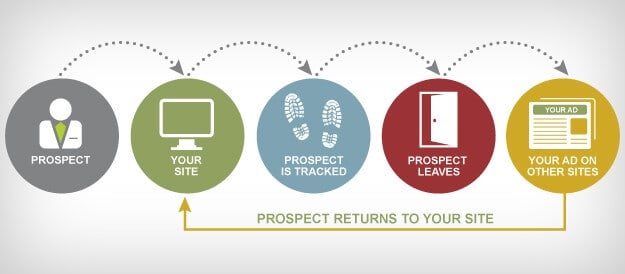
If you put on your creative hat, you can re-target your old audience and existing leads in many ways:
- You can target people who engaged with your business previously but left midway, such as remarket people who added products to the cart but never purchased or took a free trial but didn’t become premium subscribers.
- Similarly, you can target by recency, i.e. if they viewed or searched for your product within the last month, they might require little to no persuasion to convert. Old customers who bought several products or services but didn’t visit recently are also excellent targets.
- Remarket engagement from Instagram or Facebook because they already engage with your brand but haven’t visited your sales pages yet.
If none of the above ideas resonate with your goal, try Facebook lookalikes options. It’s a powerful tool that can bring in hot leads, almost ready to convert. You can target your top customers’ lookalikes, repeat clients, those who spend the highest or the lookalikes of those qualified leads who didn’t translate into a buyer.
First, test out your lookalikes with a smaller audience such as 1% of the people, and once you find the best performing lookalike section, increase the audience size according to your budget.
4. Leverage Facebook’s Geotargeting
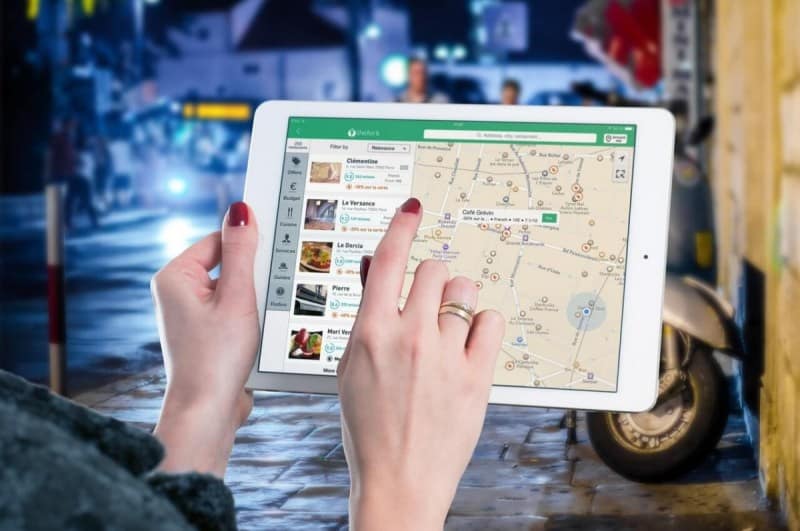
Some businesses are local, while others deal nationally or internationally. In any case, you should add proper geotargeting settings for your ads, so you don’t end up spending money for leads that are too far away to do any business with you.
For example, if you’re a local business, targeting the local area and the neighboring towns and cities might work fine for you. But, if you’re strict when it comes to your service area, you might want to add more restrictions.
Adding locations to your ad is fairly straightforward. From the dropdown menu, choose Include or Exclude and then type the area you want. You can type countries, states, cities, DMAs, Zip codes, addresses, etc.
Or else, you can just drop a pin on the map and then adjust the range around that pin. It’s a great way to run some hyperlocal ads.
5. Understand Targeting Layers
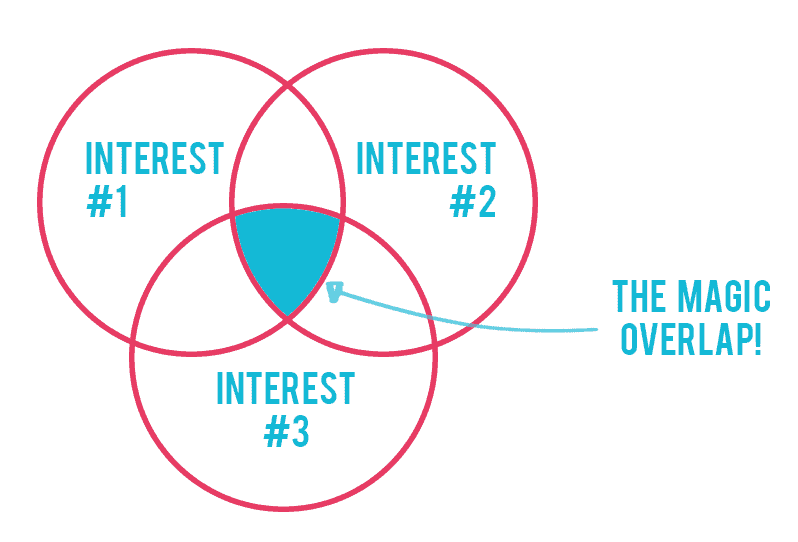
You can end up unintentionally including or excluding an audience category if you don’t understand the difference between AND and OR targeting logic of Facebook ads. It can be the difference between targeting 20,000 and 20,000,000.
When you select a new interest in the same category, you form an OR relation that increases your target audience. But when you add another box, for say, Income or Education, you create an AND relation which restricts your audience selection.
For example, you may target people who love to travel OR play sports. In this case, even if one of the conditions is fulfilled, the ad will be shown. Now, if you target people who love to travel AND have a certain income level, you have narrowed your ads target.
The goal is to be neither too broad nor too narrow.
6. Test Multiple Versions of Ad Copy
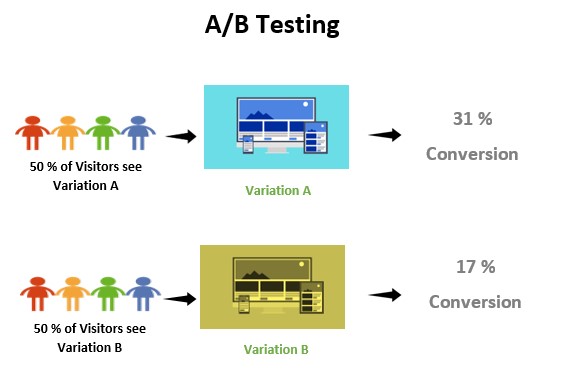
A stellar piece of ad copy isn’t created in one night. It evolves as a result of tests performed over and over, and over again. Every successful ad is a result of a series of optimizations. Every step improves the performance and profitability of your campaign gradually.
For example, you can launch your campaign with three ads and isolate the one with the most ad impressions.
Now test this winning ad with three different images or headlines, keeping everything else the same. Choose the one with the highest click-through rate (CTR) and check it for three different call-to-actions (CTAs). Again, keep the best performing ad and test it with a few different landing pages to synthesize the best performing combination.
Perform split tests at each stage, one variable at a time, to optimize your ad copy. However, don’t focus solely on ad impressions or CTR. Keep an eye on the conversion rates as well. In the end, the success of any ad campaign is how well it converts
Experiment with ad bids and run your campaign at different days of the week and times of the day. There’s no one-size-fits-all, and you have to carefully track your results to find the most profitable time and day.
7. Keep An Eye on Relevancy and Frequency

Frequency is the number of times a single user sees the same version of your ad. A frequency score under 3 is quite desirable, but if a person is viewing your ad 7 or 8 times without converting, it’s probably harming your campaign.
A higher frequency can mean that your audience is too narrow. If you have a broad enough audience, your ad will have enough people to cycle through without repetition.
On the contrary, the relevancy score should be as high as possible. In simple words, the relevancy score means your ad is showing to the right audience who is interested in your business.
The relevancy is from 1 to 10, depending on the response your ad gets. Likes, shares, views, clicks, and comments are all positive engagement factors, while people hiding your ad is a negative engagement.
8. Optimize for Different Ad Placements
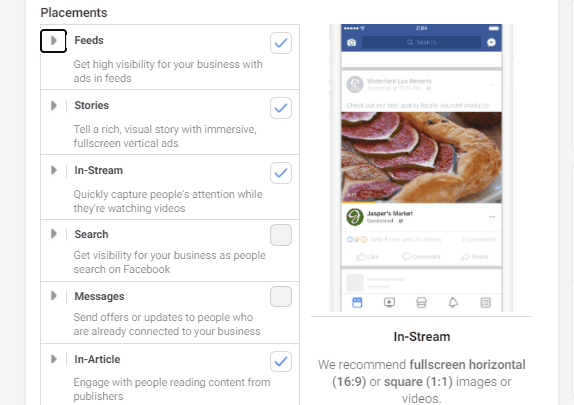
You can post ads at a few different places on Facebook and off Facebook. Off Facebook ads include Instagram, Messenger, and third-party platforms in the Facebook Audience Network.
Your ad campaign reacts differently to different ad placements. For example, Instagram ads cost more than Facebook, but you’re most likely to engagement there. Similarly, the newsfeed and messenger ads perform better than ads in the right column and usually have higher CTRs.
Some of these placements are not available unless you target a specific device or campaign objective. Many advertisers overlook details of Facebook ad placements and end up wasting money on the wrong audience.
Optimizing your ad for the ad placements is crucial to ensure your money is spent most efficiently. Different ad placements serve different goals and can have specific design restrictions.
9. Perform a Test Launch First
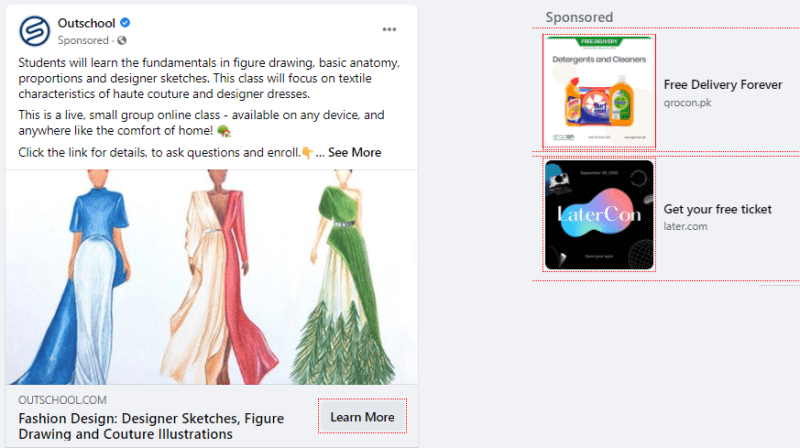
Once you’ve perfected your ad copies, go ahead and run a test campaign with a small budget of about $100.
This test launch isn’t for testing ad performance. It’s to ensure that tracking scripts and pixels are firing, Google Analytics is working, ads are showing correctly at the right places, and pages are loading quickly.
If everything is working as it should, you’ll soon start collecting data for the ad performance.
After only the first day, you should be able to see the number of clicks, CTR, ad impressions, etc. It’s best to test ahead of the day you want to start your campaign because things can go haywire, ads can be declined without any reason, or traffic numbers show discrepancies across different platforms.
Once everything works like clockwork, you can lodge your campaign and start spending your ad money.
10. Optimize Ad for Mobile First
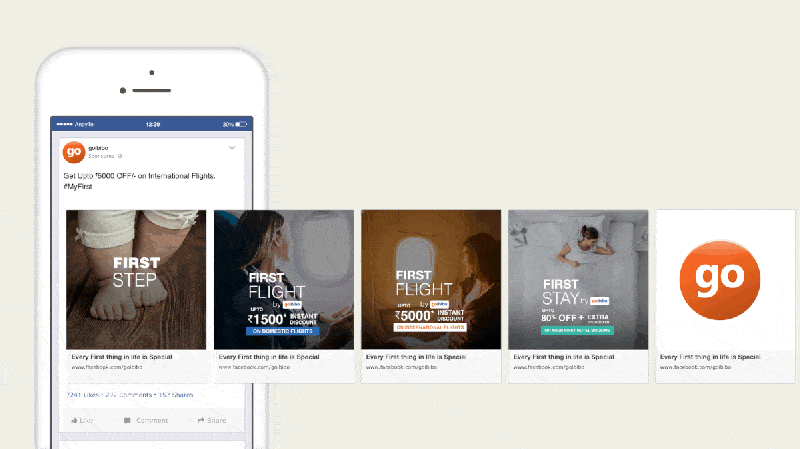
Did you know 79% of people access Facebook through their smartphone! That’s why you need to optimize your Facebook ad for mobile users first and foremost. It’s where your audience hangs out and will most likely interact with your brand.
Ad copy created for desktops doesn’t always translate well across different devices, especially mobiles, but the ones designed for mobiles typically adjust well on desktops. So, mobile-first content ensures that your audience will view the correct ad format irrespective of their device.
Use images and videos that fit the mobile screen. You can crop your non-vertical video to fit your mobile’s 9:16 screen right from the Ads Manager. Remember to add text to videos for people who view videos on mute.
Similarly, your CTA has only 50 characters space on the mobile screen, so write your ad copy accordingly.
Add simple and actionable CTAs like ‘Call Now’ or ‘Get Discount.’ Remember, if you make it easier for your customers to act, you increase your chances of sealing the deal.
How Much Do Facebook Ads Cost?
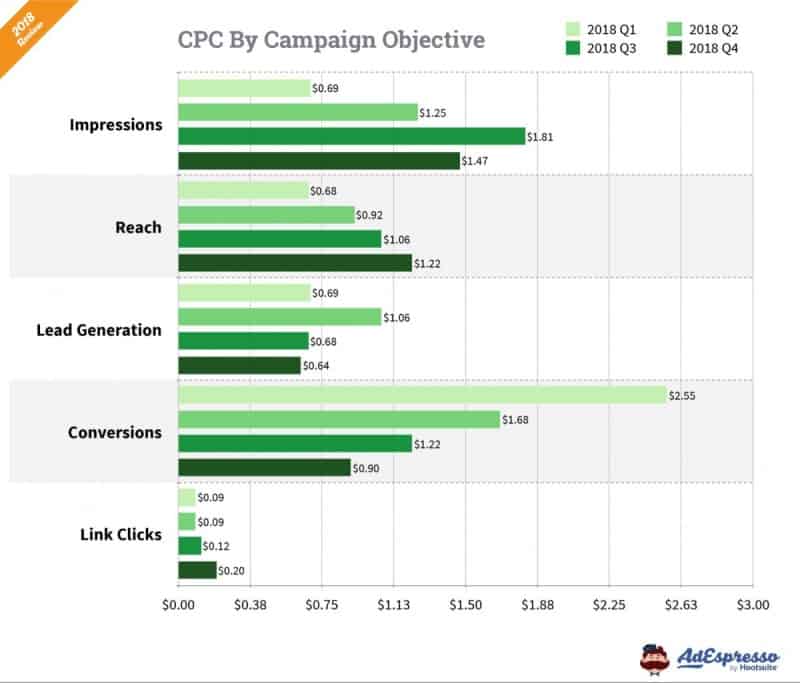
The image above is the breakdown of CPC by Campaign Objective, according to AdEspresso’s quarterly report for 2018.
The average cost-per-click (CPC) of Facebook ads is around $0.97, whereas cost-per-thousand impressions (CPM) is $7.19 typically. Similarly, you can expect to pay $1.07 per like and $5.47 per app download.
AdEspresso assessed almost $300 million of Facebook Ad spend to determine the above-mentioned average Facebook advertising expenditure.
However, you should bear in mind that the above numbers are references at best and cannot give you a realistic approximation of your ad expenditure. If you wish to tabulate a realistic budget for your Facebook Ad campaign, you need to understand the factors influencing Facebook ads costs.
Regardless, the real cost of any advertisement lies in the conversion, i.e., the return-on-ad-spend (ROAS).
If CPC for an ad campaign is $0.97 and the conversion rate is 5%, your cost-per-conversion comes around $20.
Now it’s up to you to decide if it looks lucrative to you or not. And how do you do that?
It all boils down to what this conversion means to you in terms of revenue. How much do you earn for every dollar you spend on advertising?
Facebook ads are more affordable and effective compared to other advertising platforms out there. But, it’s your return-on-investment (ROI) that determines the actual cost of Facebook advertising for your business.
What Makes Facebook Ads So Effective?
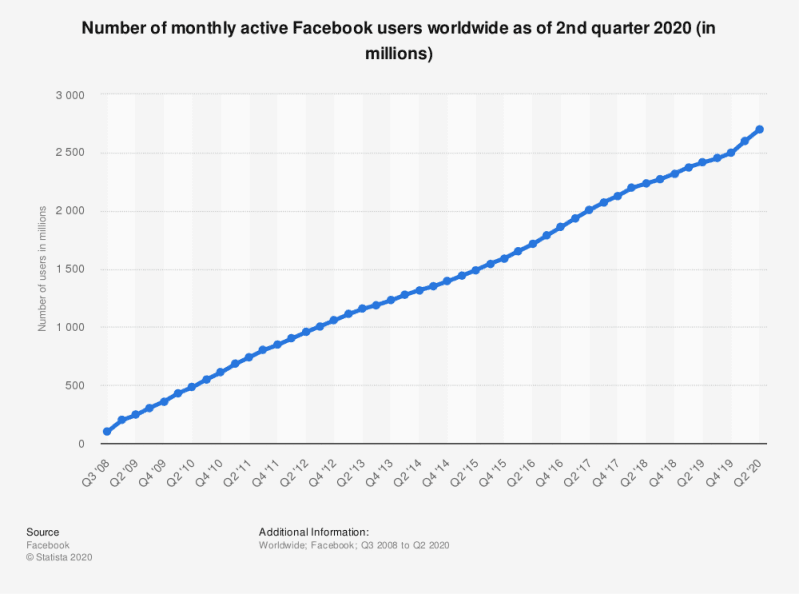
Over 3.14 billion people worldwide are using at least one of Facebook’s core products, i.e. Facebook, Instagram, Whatsapp, or Messenger.
Facebook’s immense global audience and adaptability are the forces behind its ad campaigns’ effectiveness, especially for B2C businesses. There are three reasons why Facebook ads are so effective.
- The sheer number of people on Facebook allows you to create subsections based on desirable factors and still get a big chunk of the audience to target.
- You can reach the right people and improve ROI by using hundreds of variables to pinpoint your ideal customers. Facebook has no competition in terms of the enormity of its member database. It includes the breadth of their interests, geographic locations, buying behaviors, family ties, professions, political affinities, and whatnot!
- Facebook stays ahead of its game and has been continuously evolving, keeping up with the changing consumer behaviors and technology usage. The platform also foresees shifts in consumers’ media consumption and quickly adapts accordingly.
Different Types of Facebook Ads
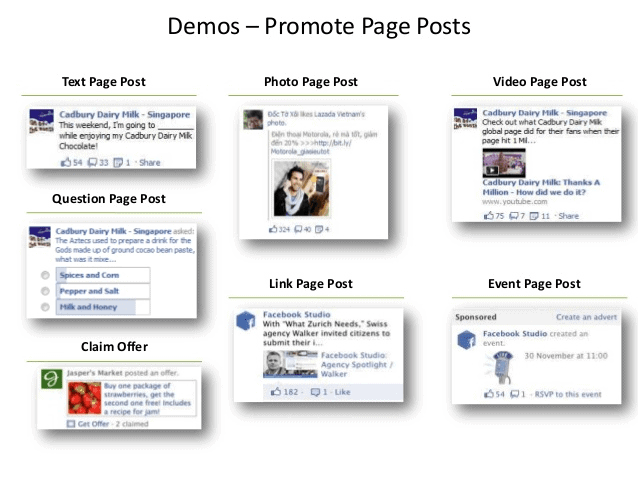
Facebook offers a variety of ads for businesses to choose the best ones that align with their goals and creative style. The Ads Manager has categorized all ad types based on the campaign objectives, i.e. Awareness, Consideration, and Conversions.
You can choose Ad types based on their format, video, photo, slideshow, carousel, dynamic ads, lead form ads.
Typically, a Facebook ad copy can have 90 characters, a headline of 25 characters, and a link description of 30 characters. The recommended image size is 1,200 x 628 pixels.
Let’s look at all the different Facebook ad types and see which one fits your business goals the best.
Traffic and Leads
Most businesses want Facebook advertising to drive traffic to their business. Perhaps you want to increase your overall reach or wish to generate more leads. You may also want people to sign up for a newsletter or reach a landing page and convert.
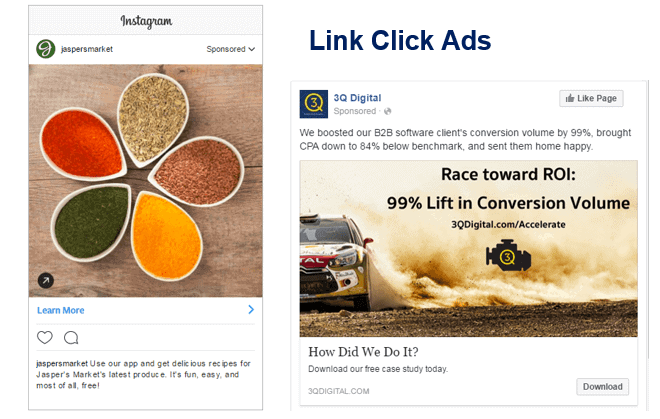
For traffic and leads, you can use any of the following ad types.
Link Click Ads
As the name implies, these ads promote your landing pages, blog posts, or videos. You can run them in the right column, on desktop and mobile news feed, or Instagram. As a result, you can get a greater reach for your business and generate likes and engagement for your Facebook page.
If you promote videos, make sure the aspect ratios are from 16:9 to 9:16, file size up to 4 GB max, and maximum video length of 120 minutes.
Boosted Page Posts
You can promote your Facebook posts just like any other ad. The boosted post gets more reach and promotes your page across Facebook’s advertising network. You can set the target audience and add unlimited characters to the ad copy of boosted page posts.
Sales and Leads for a Product or Service
You must have seen ads of your favorite brands with multiple scrollable products on Facebook. Online store owners or service providers with various offers can show a variety of products and services in a single ad on Facebook.
Some ad types allow you to interact with the brands without leaving Facebook, which increases load times, improving user experience, and decreasing the cost per lead.
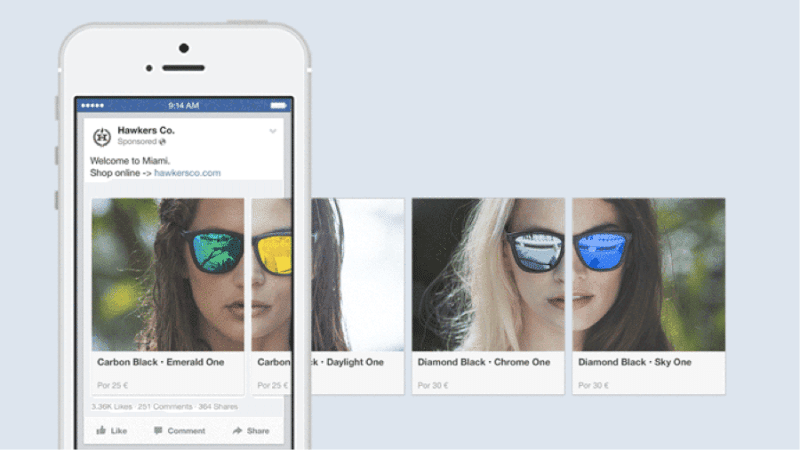
Carousel Ads
It’s a single ad unit where you can add 10 different images or videos with their own headlines, links, and CTAs. You can run these ads on desktop and mobile newsfeed, audience network, and Instagram.
With carousel ads, you can advertise many products, posts, or offers at the same time. The variety improves engagement and allows you to figure out which offers and products attract customers the most. For these ads, you can have an image size of 1080 x 1080 or 600 x 600 pixels.
Dynamic Product Ads
Dynamic product ads (DPAs) are a great remarketing tool. They target people who already interacted with your brand. They may have completed bought from you or have left from halfway. The cool thing about DPAs is that Facebook handles all the automation and retargeting itself. Ad image size can be 1,200 x 628 or 600 x 600 pixels.
Facebook Leads Ads
As the name suggests, these ads are intended for leads generation. Since your audience can sign up for your offers and download your content without leaving Facebook, these ads are valuable for quickly getting your leads’ email addresses.
The context card headline limit is 60 characters, the button can have 30 characters, and you can write unlimited characters in the body. However, if you wish to add bullet points, you can add 5 with 80 characters each.
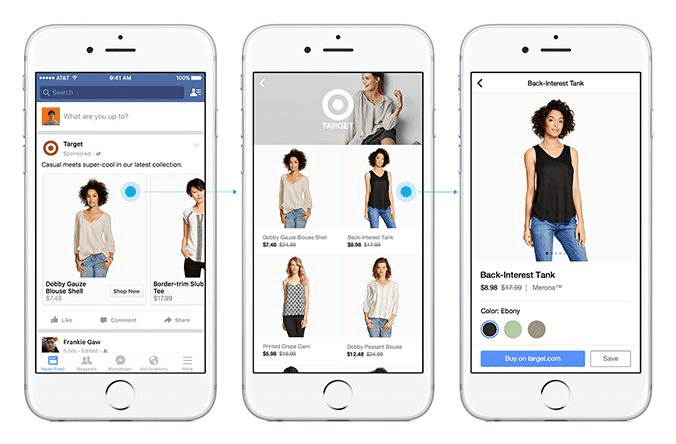
Canvas Ads
Only available for mobile newsfeed, these ads load 10 times faster and provide a superior customer experience. They are a carousel of images that you can zoom in or out and tilt the mobile to see from different angles.
Canvas ads have a relatively longer headline space of 45 characters compared to 25 for regular ads. You can add videos instead of images and add buttons to take readers out of Facebook to your website or landing page.
Collection Ads
These are also mobile exclusive, and you can add multiple products or offers to collection ad sets. The audience can browse products within the ad, interact with them, and even purchase them, without leaving Facebook.
Make sure the image ratio is 1.9:1 and doesn’t include more than 20% text.
Likes and Engagement
Did you know that your page posts only reach 2-3% of your followers organically? It means you have to promote your posts to ensure you get likes and engagement from your entire fanbase. The following are the ads dedicated to promoting your page and increasing your content reach among the Facebook audience.
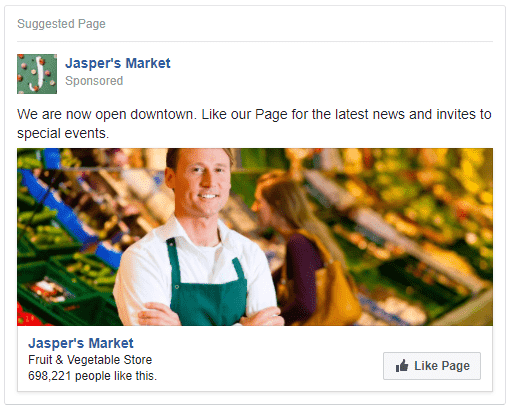
Page Like Ads
Typically placed in the right column and desktop and mobile newsfeed, these ads, true to their name, increase the number of people who like your page. Choose the right image that correlates with your page and the right audience.
It is absolutely crucial to pick the right target audience for your ad because you don’t want a lot of cheap likes for your page at the end of the day. You want people who are really interested in your business to like your page.
Page Post Ads
You can advertise your text, image, or video-based posts to increase page likes. Video drives higher engagement compared to images and text. Avoid advertising with text-based posts only as they bring the least engagement, and there’s hardly ever a reason to use them.
Another benefit of video ads is that you can re-target people who did not watch your video ad until the end or left too early. Make sure the aspect ratio is 16:9 for a full landscape or 9:16 for a full portrait. Keep the file size less than 4 GB and video duration under 120 minutes.
App Installs
Facebook reports 100 million app downloads per month, so it’s no surprise that they have ads specifically designed to promote your apps. These ads are a unique opportunity for you to get new users for your Android and iOS apps.
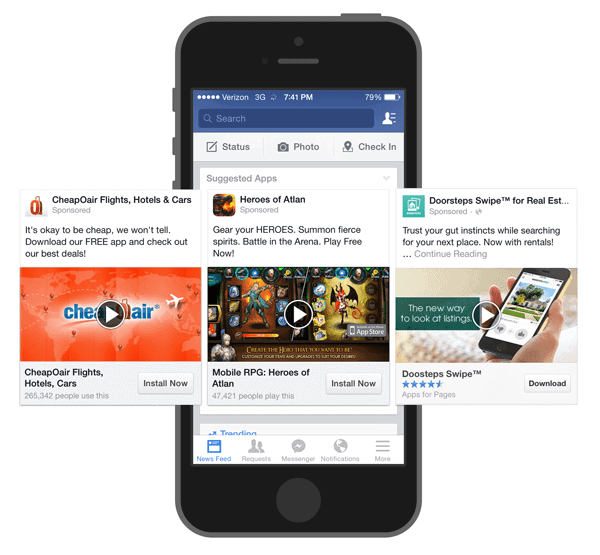
Mobile App
These are exclusively displayed in the mobile newsfeed with a CTA ‘Install.’ When the users tap it, the App Store pops up, and installation begins. You can choose whether your target audience should have iOS or Android devices.
Desktop App
These ads appear in the right column or the desktop newsfeed. This ad is exclusively available for your desktop apps that are not supported by mobiles.
Instagram Mobile App Ads
These ads are specifically designed for mobile app advertisements on Instagram. Since Instagram is a mobile app, its users may be less reluctant to try out another app. You can choose both images and videos for Insta ads. Ensure the image ratio is 1:1 with 1080 x 1080 pixels size, and the caption doesn’t exceed 125 characters.
Visitors to Store or Event
If you want to increase foot traffic to your store or an event, these ads are your best choice. They are optimized to bring visitors to your offline location, and if you choose your target audience correctly, these ads can prove very profitable.

Event Ads
These ads are typically placed on the right column or in the newsfeed on both desktop and mobile. Since you want foot traffic to a single location, select geographical reach correctly to minimize ad spend and increase return value.
Offer Claims
If you have any live offers such as discounts, deals, and promotions, these ads are specifically designed to bring in customers. You need to have at least 50 likes on your Facebook Page to create an offer claims ad. When the user clicks on your ad, he receives further instructions to redeem the offer through email. It can be a great way to build your email list as well.
Local Awareness Ads
These ads work best with location-based targeting because you want to attract people located near your store. Your CTAs prompt the target to “Call Now” or “Send Message” to find your location easily or start the conversation.
Messenger Ads
Messenger ads are quite effective at starting instant communication and serve as a great source of leads generation. They appear in the Facebook messenger inbox, where you chat with your friends.
The ad is in the main tab, among other chat conversations. If the users choose, they can click on the ad and ask for more info or specific questions right from the Facebook messenger. Make sure the image is at least 254 x 133.
Getting Started With Facebook Ads
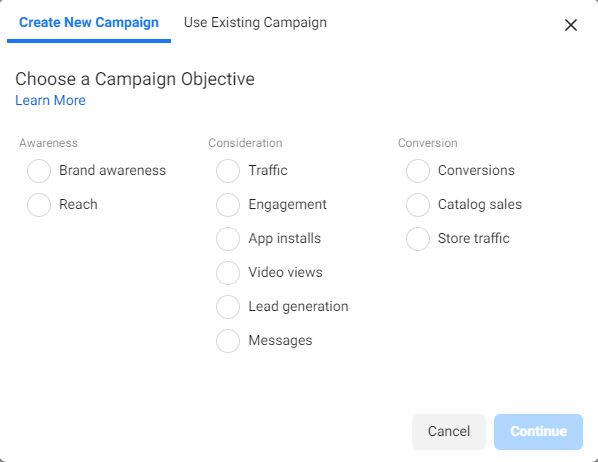
Facebook advertising is an effective medium to grow your business reach. But, as you can see, multiple ad choices help you target your goals and audience with pinpoint accuracy. On its face, all these different types of Facebook ads can look a little overwhelming for those who are new to Facebook advertising.
So, let’s simplify the process and give you a rundown on how to get started with Facebook ads.
The very first step is to visit Facebook Ads Manager. It’s where you create ads, track their performance, and get an overview of your ad campaign. The following are the steps to create your first ad.
- Choose your objective from awareness, consideration, and conversion and select the subcategories keeping your goal in mind.
- Specify your target audience. You can choose the core audience based on age, gender, interests, and location, etc. You can upload a contact list for custom audience selection or choose lookalikes to find people similar to an existing target audience.
- Decide where you want to run your ad. You can run it on Facebook, Instagram, Messenger, Audience Network, and then choose the ad placement for each.
- Now define the budget for your campaign. You can specify the overall amount you wish to spend or the cost-per-result you get from your ad.
- Choose Facebook ad type and format, such as video, image, carousel, etc.
Now that everything is in place, you can review your ad, confirm the settings, and submit your ad. Don’t forget to measure your ad’s performance. Remember, it requires a lot of optimization to create a stellar ad campaign with high ROIs.
With the investment of time, effort, and money, you can get quite high returns on your ad spend. For SMEs, Facebook advertising is an affordable way to build an audience and increase reach, engagement, and sales. If you have any questions or require help setting up your Facebook ad campaign, reach out to us anytime, and we’d be happy to assist you.
Karli is content marketing consultant behind Wild Idea, a content marketing and SEO collective focused on driving big results. With over 12 years in the marketing industry, she’s worked with brands large and small across many industries to grow organic traffic and reach new audiences. She writes on everything from marketing, social, and SEO to travel and real estate. On the weekends, she loves to explore new places, enjoy the outdoors and have a glass or two of vino!






